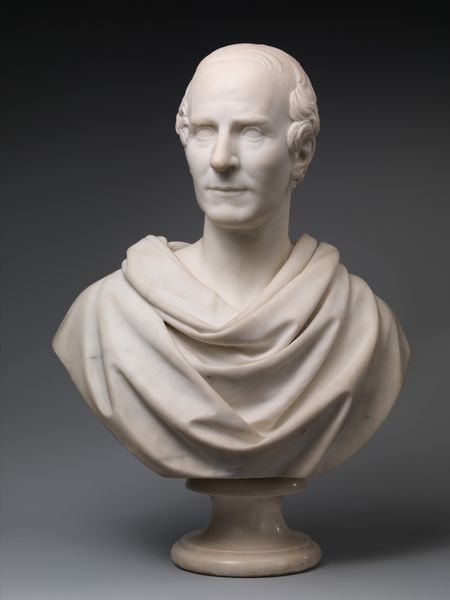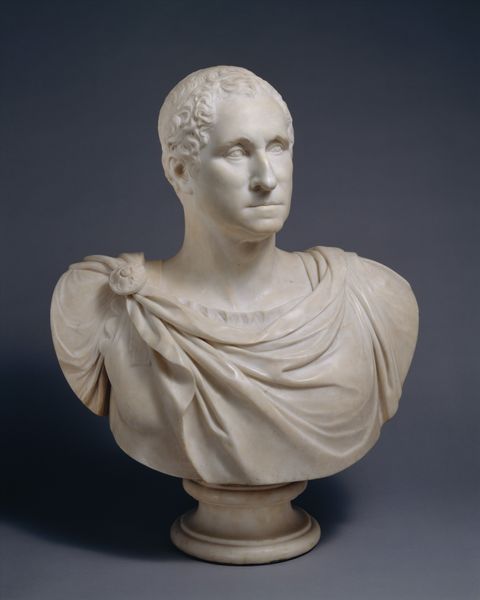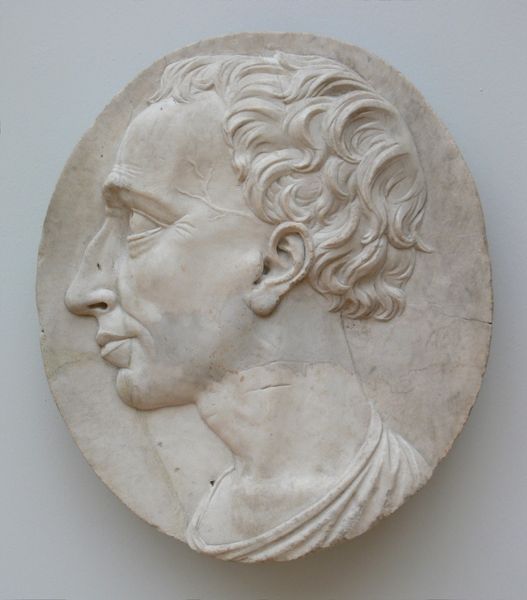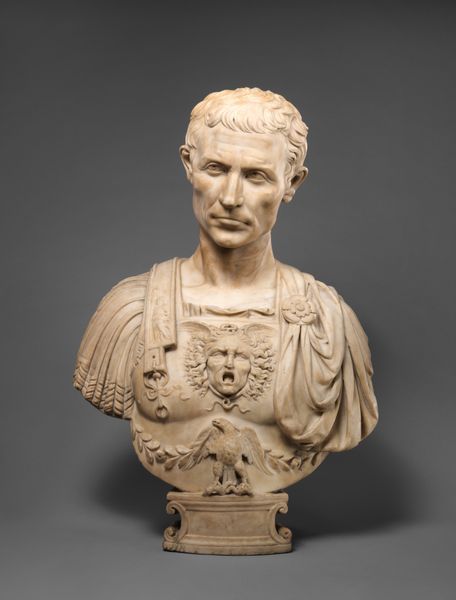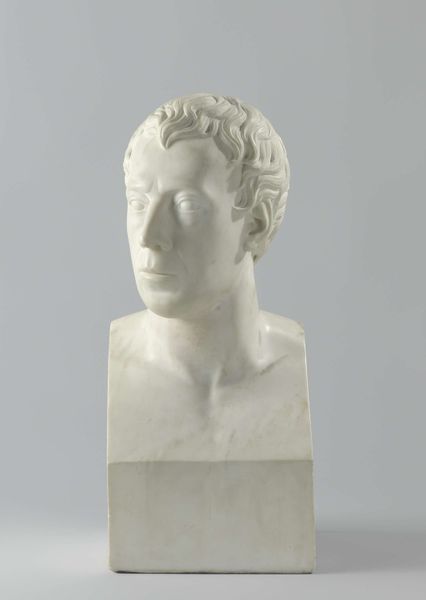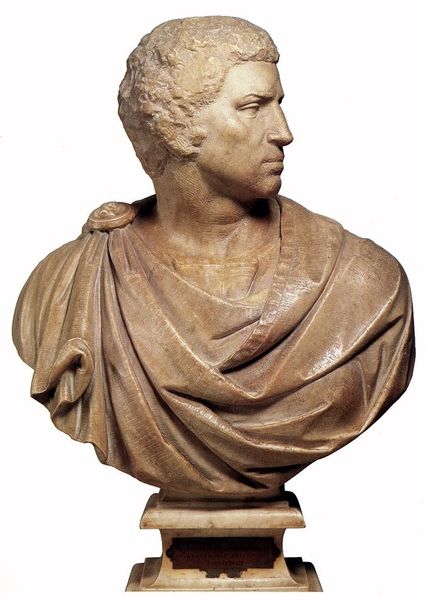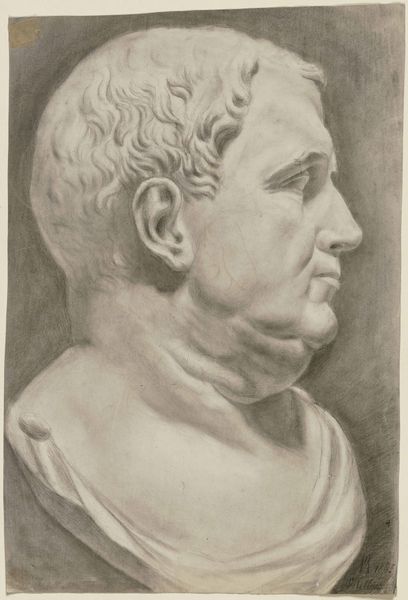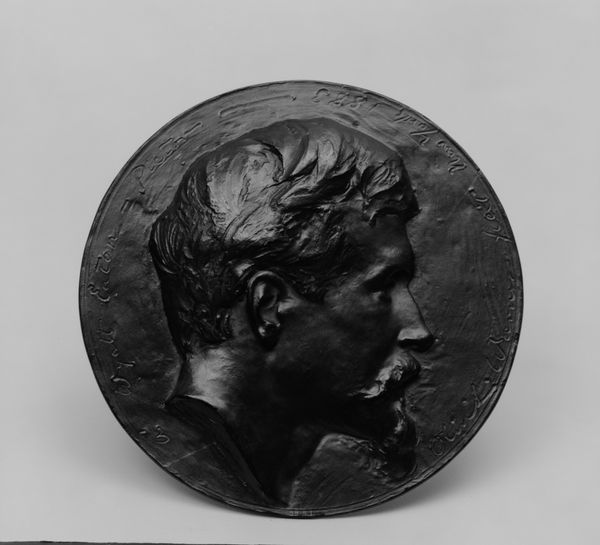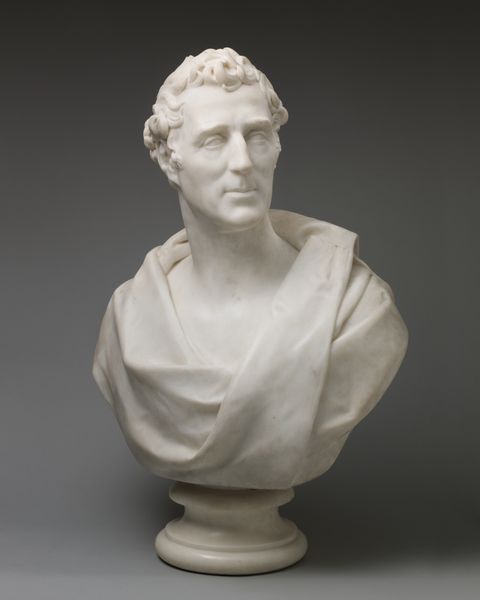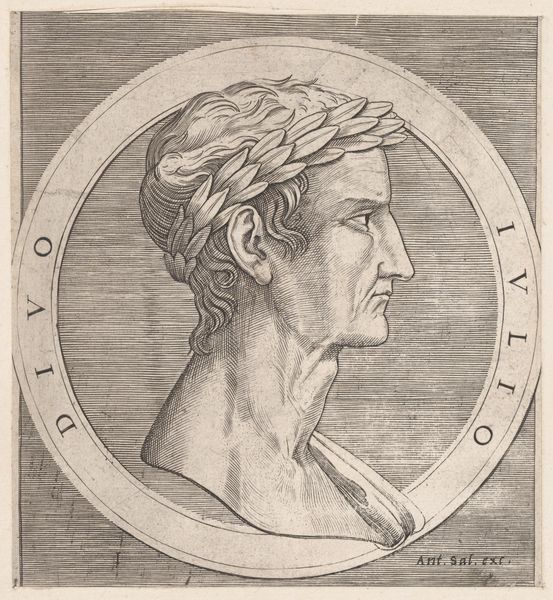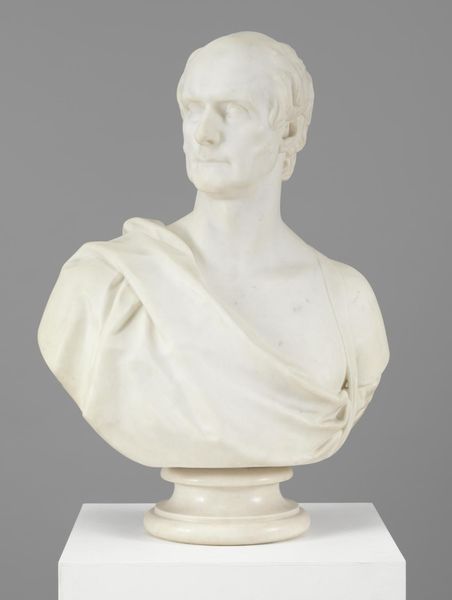
Giovanni Gioviano Pontano (1426–1503) 1485 - 1495
0:00
0:00
relief, sculpture, marble
#
portrait
#
stone
#
sculpture
#
relief
#
sculptural image
#
figuration
#
classicism
#
sculpture
#
men
#
decorative-art
#
charcoal
#
marble
#
italian-renaissance
#
profile
#
statue
Dimensions: Overall (wt. confirmed): H. 19 7/8 x W. 13 1/8 x D. 4 1/2 in., Wt. 73lb. (50.5 x 33.3 x 11.4 cm, 33.1126kg)
Copyright: Public Domain
Curator: What a compelling portrait. The crisp lines and dignified air about this man are palpable, aren't they? Editor: Absolutely. The marble almost breathes. I see a stoic figure, perhaps burdened by responsibility. The texture gives the piece an incredible weight. Who is he? Curator: This marble relief is a portrait of Giovanni Gioviano Pontano. Sculpted between 1485 and 1495 by Adriano Fiorentino, this work presents a compelling figure of the Italian Renaissance, displayed here in the Metropolitan Museum of Art's collection. Editor: Ah, the Met. So, placing this in the Italian Renaissance, and seeing the classic profile… were these kinds of portrait reliefs common for commemorating scholars or humanists like Pontano? I see how it speaks to ideals of male intellect and power. Curator: Exactly! This echoes a classical Roman style. Renaissance society looked back to antiquity, seeking to emulate that world’s aesthetic and celebrate humanist learning. Displaying these portraits in their homes asserted social status and engagement with classical ideals. It was a statement of power and intellectual engagement. Editor: You can feel the conscious connection with antiquity in the way the relief focuses so clearly on the face. What I find interesting, though, is thinking about accessibility. Who *really* got to see these portraits in their homes? How did it shape public perceptions of elites like Pontano? Curator: A really pertinent point. Access would have been very limited, solidifying the subject's place within a closed elite. While celebrating the individual, it reinforces an implicit hierarchy. Editor: It prompts the question of what purpose portraiture truly serves. Is it to memorialize, to elevate, or simply to document privilege? Curator: It is often a blend, of course. This particular example seems aimed to embed Pontano within a lineage of great thinkers. A powerful message, framed for a very select audience. Editor: That makes me think of how power dynamics affect which faces, stories, and histories we choose to remember and preserve in museums today. It urges a deep consideration of whose stories are absent and who decides what gets to be remembered. Curator: It indeed calls for a renewed interrogation of museum practices, and a re-evaluation of the art's position within broader sociopolitical histories. A lasting, profound question inspired by a sculpted portrait. Editor: Absolutely, and as a material witness, the sculpture helps us engage with histories of power and representation, even now. Thank you!
Comments
No comments
Be the first to comment and join the conversation on the ultimate creative platform.
